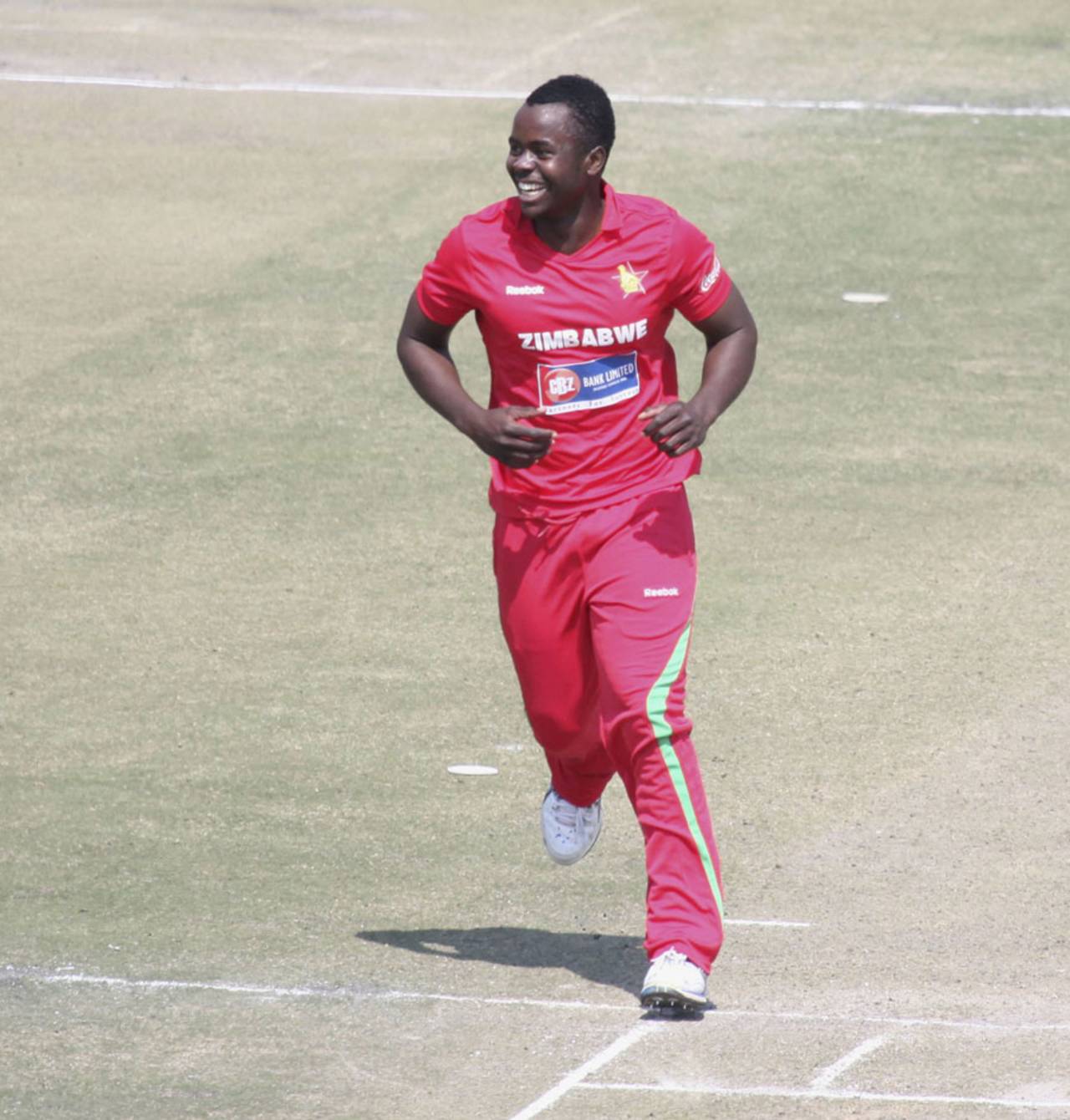Highest totals without a century, and dream ODI debuts
Also: the most team changes made by a country in successive one-day internationals, and highest individual Test scores in the second innings

Like Mustafizur, another left-arm seamer, Zimbabwe's Brian Vitori, took five-fors in his first two ODIs • Associated Press
It's true that Brendon McCullum's two highest Test scores - 302 against India in Wellington in 2013-14, and 225 against India in Hyderabad in 2010-11 - both came in New Zealand's second innings. His next-highest of 224 - also against India - was in the first innings at Auckland in 2013-14, a week before that triple-century. The batsman who enjoyed the second innings the most turns out to be Bangladesh's Al Sahariar, whose seven highest scores - ranging from 71 down to 34 - all came at the second attempt. Six batsmen - Ali Bacher (South Africa), Hanson Carter (Australia), Harry Cave (New Zealand), Junaid Siddique (Bangladesh), Pommie Mbangwa (Zimbabwe) and Shane Shillingford (West Indies) - all recorded their five highest scores in the second innings. Of that group, Junaid was the only one to make a century (106 against England in Chittagong in 2009-10), while Mbangwa's scores ranged from 8 to 3. His highest first-innings score was 2 not out. In all Mbangwa collected nine ducks (and eight no-outs) in 25 Test innings.
The 19-year-old fast bowler Mustafizur Rahman began his one-day international career with 5 for 50 against India in Mirpur, and added 6 for 43 in his second match, also in Mirpur. The only other bowler to start his ODI career with five-fors in his first two matches is another left-arm paceman - Brian Vitori of Zimbabwe, who took 5 for 30 on debut, against Bangladesh in Harare in August 2011, and added 5 for 20, also at Bangladesh's expense at Harare, two days later. Mustafizur has 13 wickets after three ODIs, edging out Vitori, Ryan Harris, Imran Tahir and South Africa's Juan "Rusty" Theron (11 each).

Unsurprisingly perhaps, the man leading the way here is Sachin Tendulkar: 17 of his record number of 49 one-day international centuries came in the second innings of a match. He might be overhauled fairly soon, though: Virat Kohli already has 14 hundreds while chasing. Tillakaratne Dilshan and Chris Gayle are a bit further behind with 11, while Sanath Jayasuriya and Saeed Anwar both made 10. If you restrict it to successful run-chases, it's even closer: Tendulkar scored 14 centuries in matches India won while batting second, while Kohli has 13 so far. Dilshan, Jayasuriya and Saeed Anwar made nine.
The Central Districts seamer Andrew Mathieson became the 20th bowler to take a wicket with his first ball in one-day internationals when he had Jason Roy caught at point during the final match against England at Chester-le-Street last week. The only other New Zealander on the list is Shane Thomson, who dismissed India's Mohammad Azharuddin with his first delivery in Dunedin in 1989-90. The first to do it was England's Geoff Arnold, against Australia at Old Trafford in 1972. For the full list, click here.
The highest total in a one-day international without a century is South Africa's 392 for 6 against Pakistan in Centurion in 2006-07, when the highest individual score was Jacques Kallis's 88 not out. Next comes England's 365 for 9 against New Zealand at The Oval earlier this month, when the highest individual contribution was 88 by Eoin Morgan. The Test record is India's 524 for 9 declared against New Zealand in Kanpur in 1976-77, when the highest individual score was just 70, by Mohinder Amarnath, one of six half-centuries in the innings. That record almost went in Perth in December 2009, when the highest score in Australia's 520 for 7 declared against West Indies was Simon Katich's 99.
The only cases of a team fielding an entirely new team in what were successive one-day internationals for them came about because of a big gap between fixtures - Canada didn't play any official ODIs between the 1979 World Cup and the 2003 one, so understandably their teams were entirely different. The same happened for the UAE, between the 1996 World Cup and their inclusion in the 2004 Asia Cup.
Steven Lynch is the editor of the Wisden Guide to International Cricket 2014. Ask Steven is now on Facebook